Common Practices. Managerial Courage. Calculated Risk.
If a founder’s belief in a hero product starts a company on its journey toward the billion-dollar mark, then it’s stellar decision-making and a determined field that can propel them into momentum and triple digit multimillion-dollar status.
But scaling to a billion or more? What does it take to get there? Is it possible to suss out common denominators that give rise to the birth of a legacy company? What has to change along the way? What doesn’t?

Yuri A/shutterstock.com
There are a several billion-dollar domestic companies in the channel: Ambit, Amway, doTERRA, eXp Realty, Forever Living, Herbalife, Melaleuca, Medifast, Nu Skin, Primerica, Rodan + Fields, Scentsy, Tupperware, USANA and Young Living. These questions were top of mind when DSN reached out to a select list of these billion-dollar companies.
The idea was to make a common denominator checklist of sorts, gleaned from their responses to questions about their approach to business. We asked about manufacturing, information technology, environmental, social and governance initiatives, in-house research and development and the like. Do they consider themselves customer-centric? What do they gain from segmentation?
No small surprise—billion-dollar companies have plenty of tangibles in common. After all, these companies are headed by industry leaders, the likes of which identify and promote best practices throughout the broader direct selling industry.
No company—billion dollar or otherwise—uses the identical building blocks in precisely the same manner. Here, we aim to highlight the benefits, as these companies see it, to consistently apply best practices in order to meet their corporate goals.
We also consider the less tangible and harder to measure corporate and leadership characteristics that billion-dollar companies share and why these attitudes and behaviors are vital for those companies who someday want to claim that billion-dollar status themselves.
What Makes a Billion Dollar Company?
It took two decades or more from their founding for several of the participating billion-dollar companies to reach the illusive billion dollars in sales. Scentsy, a newcomer to the list in 2021, found their stride in just 17 (discover more about their journey on page 60). But Rodan + Fields met the mark in an astonishing eight years, simultaneously becoming the number one premium skin care brand in the United States in 2016.
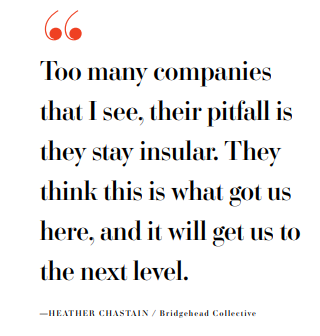
No doubt, industry best practices applied over the years pushed them all toward their goals and continue to inform the strategic thinking that keeps them growing. But what else came into play to get them to a billion? We asked Heather Chastain, Founder and CEO of the direct selling consultancy Bridgehead Collective, just that.
“You don’t see timid companies reach that level. You see bold companies, who take calculated risk, thoughtful risk, mission-minded risk, but risk nonetheless,” Chastain, who has worked in the C-Suite of companies like Shaklee, Arbonne, Celebrating Home and BeautiControl, shared.
There’s an immense amount of patience and foresight necessary to scale a direct selling business. It also takes corporate recognition that what earned them their current status may not be what ultimately gets them across the billion-dollar threshold.
As Chastain explained, “Too many companies that I see, their pitfall is they stay insular. They think, ‘This is what got us here and it will get us to the next level.’” Chastain helps companies think through marrying innovation and strategy by opening up and engaging management teams to embrace strategic thinking as a daily activity as opposed to a one-time event.
Companies, large and small, can weave this kind of day-to-day strategic thinking into their commitment to and application of industry best practices. Billion-dollar companies long ago began this process and have reaped the advantages.
So, what are these best practices and how do billion-dollar companies put them to work?
Customer Centricity
Billion-dollar companies put customers at the center, whether that’s improving the shopping experience; better understanding wants, needs, goals and motivations; or maximizing data and analytics to help customers make informed choices and their distributors deliver products that excite and satisfy. They understand if they do not put the customer first, the customer will simply find a company that does.

“We have a Customer Experience (CX) office led by the C-Suite of the company that manages and socializes customer journeys across our personas, to prioritize and address the top needs of the customer according to the data the team gathers,” explained Ruth Todd, Senior Vice President and Chief Reputation Officer at Nu Skin.
That CX team prompts collaboration across Nu Skin’s departments and markets to deliver key customer experiences that drive attraction, connection and retention. Customer need and experience is paramount at every touchpoint, as it helps affiliates attract new customers and grow their customer base.
Global Responsibility
Environmental, social and governance (ESG) initiatives resonate with customers as well, but that’s not the only reason billion-dollar companies embark upon them. Doing good is good for business, and it also helps secure the direct selling business model in the marketplace.
People, planet and product—those are the areas of ESG focus for billion-dollar companies, who wrap sustainability, charitable giving and social impact into their business strategies and create governance committees at both the board level and internally to assure efforts remain aligned with company core values, vision and goals.
“We make no distinction between our Global Responsibility and operating our business: Both are reflected in our long-term growth strategies and our day-to-day activities. We are committed to creating positive impacts for our independent distributors, employees, communities and the planet, while driving sustainable business growth,” Herbalife CFO Alex Amezquita said.
The initiatives are plentiful and varied. USANA, in addition to their efforts to create more sustainable products and packaging, has undertaken a large-scale information initiative to help employees learn how to make the company a more inclusive, equitable and sustainable workplace.
Nu Skin works closely with supply chains, product and facilities teams to do their part to protect the environment, while supplying VitaMeal to the world’s neediest through charity partners. “By working closely with experts on the ground, we have a clearer picture of how we can best help and know that we are making the greatest impact,” explained Todd.
So engrained is giving in Scentsy’s culture that since 2010, the Scentsy Family Foundation has donated more than $14.3 million to more than 175 global and local charities that their communities most value.
At Rodan + Fields, the company’s charitable arm, Prescription for Change has invested more than $15 million in programs for 1.5 million young people to give them the skills they need to thrive in school, work and life.
“Our community of distributors and home office team members are passionate about doing good and giving back. I’m constantly inspired by the various ways they demonstrate our purpose to be life changing by making a positive impact,” said Jessica Raefield, Chief Human Resources Officer.
“We also launched an ESG effort in 2019, as well as formulating 2025 Do Good goals that focus energy on the environmental and social commitments most material to stakeholders and their core business strategy,” shared Raefield.
Segmentation
Member/Customer segmentation offers clear differentiation between people who want to purchase retail products or to build a sales organization and those who simply want discounts on products for their own consumption. Billion-dollar companies embrace segmentation because it creates the most accurate picture of customer activity, intent and goals, while also improving the company’s ability to communicate and market effectively.
Detailed customer segmentation can be used throughout product and program design and development so that a company is crystal clear on a product’s unique value proposition for a target audience. It also informs the creation of compensation plans for companies like Scentsy, who do not attract large numbers of preferred customers. Scentsy distributors, for example, are not compensated on a “wholesale/retail” pricing structure, but rather a commission structure with the opportunity for bonus overrides.

Information Technology
Extensive in-house IT teams, who are called upon to manage diverse components that make up a company’s overall IT infrastructure, are a hallmark of billion-dollar companies. Because these departments have a deep understanding of the company’s values and its business operations, they are often the most effective way to reach IT goals. In-house teams support customization, help develop right-sized efforts and maintain focus. However, to prioritize and meet business needs, some companies reach to trusted IT partners for outside thinking and specialized expertise.
Manufacturing

Art_Photo/shutterstock.com
All of our respondents exercise at least some autonomy over the manufacture of their products, either through company-owned and operated manufacturing facilities or those owned by strategic investment arms. Some companies report an estimated 60/40 split between in-house manufacturing and outsourcing. Often the question of in-house manufacturing depends upon the product and where it is sold.
“Manufacturing on-site allows us to remove as many unknown variables as possible, which leads to higher quality products. When we are able to oversee virtually every aspect of product manufacturing, we can more easily spot any quality issues and what is causing those issues,” President Jim Brown says of USANA’s well-equipped in-house processes.
Herbalife—who maintains two manufacturing sites in the U.S., three abroad and eight quality control labs—began expanding self-manufacturing investments in 2010. According to COO Mark Schissel, investments in research, technology, science, manufacturing facilities and other areas allowed Herbalife to weather many supply chain disruptions and has given the company the ability to develop better and safer products that build consumer trust.
It’s a worthwhile investment according to many billion-dollar companies. Just last year Amway announced an investment of more than $50 million over the next five years in the company’s Ada, Michigan-based manufacturing capabilities and footprint.
And at Young Living it’s an integral part of the company’s commitment to quality that began with founder D. Gary Young and continues until today. Young always wanted to know where essential oils came from; how the plants were grown and harvested; how the they were extracted; and how they were stored. The company has continued that philosophy by investing in their own farms and developing sourcing and compliance programs that give them an extensive knowledge of their global essential oil supply chain.
Regional Distribution Centers
To better serve a quickly expanding customer base, many of these five billion-dollar companies utilize regional distribution centers. RDCs streamline global shipping, delivery and order fulfillment processes. Herbalife opened its third U.S. regional distribution center in Hagerstown, Maryland in September last year. Nu Skin utilizes distribution centers and warehouses in many markets, with principal facilities in Provo, Utah and mainland China. By April 2022, Scentsy will have three North American distribution centers.
Research and Development
Billion-dollar companies maintain a collaborative research and development (R&D) philosophy that combines in-house capabilities ranging from staffs of 75 in-house scientists, as is the case with Nu Skin, to co-development research and clinical testing third-party partnerships managed by in-house teams.
“Rodan + Fields develops innovative products and proprietary technologies with expertise from many professionals including esteemed doctors, PhDs, R&D experts and strategic partnerships, as well as insight from our very own brand founders, who are esteemed practicing dermatologists themselves,” shared Dr. Sumita Butani, Senior Vice President of R&D and Innovation. “Our breakthrough products begin in a world-class laboratory in Berkeley, California where our team of scientists collaborate.”
Amway shares a similar philosophy. “We have a global Innovation and Science team of 800 full-time explorers, engineers, formulators, scientists and other experts who pour their hearts and minds into every product we create,” explained John Parker, Chief Sales Officer and Regional President, West. “Having Innovation and Science as a force internally helps us guarantee scientific excellence at each and every step of the way.”

While the activities associated with in-house R&D vary greatly from company to company depending upon their product category, the over-arching effect of in-house teams proves advantageous. They can enhance vertical focus and consumer-driven responses; strengthen resource oversight and control; and reduce time-to-market.
Young Living has an in-house Research and Development department lead by Dr. HK Lin. The greatest advantage to the company is the ability to create an environment to foster the next generation of research and development leaders who will carry out the company’s vision well into the future.
“With in-house R&D, it provides us with a tighter connection to product development for greater innovation and speed to market. As we listen to our customers, we are able to focus on unique research for developing products that meet their needs, and it gives us the ability to test and gain even more understanding after products launch for ongoing enhancements,” Todd explained.
Brown agreed, “Having our R&D team in-house is a great benefit to the company because they understand the full impact of our mission and what we are trying to deliver with our products.”
Public or Private—The Great Debate
Amongst the twelve companies we considered, there is an almost even split between public and private. It’s not surprising because there is no right or wrong answer to whether or not going public is the best course of action. Each path has potential benefits and pitfalls.
Private companies face less scrutiny from shareholders and don’t have to release quarterly and annual reports like public companies do. And the process of going public is also lengthy and costly.
But there are considerable benefits to becoming a public company as well. It can mean a huge influx of critically needed cash for a growing company trying to take the next step, which can be used for strategic investments in vital areas such as supply chain, technology and international expansion to name just a few.
Leadership—More Than Checking Off Best Practices
It turns out, best practices, while extremely valuable and essential, are the easiest billion-dollar commonalities to quantify, assess and talk about. They more or less fit nicely onto a checklist, but they represent a fraction of what goes into building a billion-dollar direct selling company.
Even if a company applies them in the most advantageous ways, there’s no guarantee they will reach the proverbial pinnacle they are seeking. So what else is in play inside direct selling’s most successful companies? What can aspiring companies and their leadership teams learn from those already on the list?
Billion-dollar companies have three commonalities that make a huge difference in their eventual rise: A consistent and relentless focus on their mission; seemingly unending commitment; and managerial courage.
“The companies that get to that billion-dollar level often have founders and management teams that walk the walk. They are genuinely invested in the mission of their companies beyond the confines of a job. For them, it’s not a job. It’s a purpose,” Chastain said.
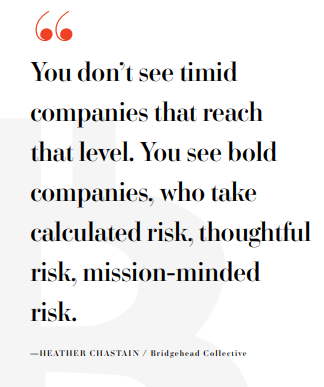
These leaders excel at sharing that mission and engaging and enlisting their fields and employees in the mission on a regular basis and absolutely not deviating from that mission even when things get challenging.
On-going commitment, even when it’s challenging to stick with an annual or a three-year or five-year strategic plan means these companies are not concentrating on short-term results or quick fixes. They are focused on the long-term objectives and have discipline throughout their organizations.
And that takes managerial courage. Chastain encouraged companies to “Take big steps; make bold changes when the market calls for it and when the field calls for it.”
“Our leadership recognizes the need to be agile and always innovating, backed by the ability to make the necessary decisions for the long-term success of the company,” Todd said.
How those decisions get made is infinitely more complex as a company scales toward a billion dollars in sales. Eighty percent of companies in the $500 million range discover in an honest assessment that a CEO or Founder is holding on too tight to too many decisions.
“To scale, everything can’t continue to come through one single point of contact. That means hands-on Founders, who have grown their businesses to say the $500 million mark, need to make space in the spotlight for others in the organization; relinquish some control; and delegate to trusted hires,” Chastain explained.
The organizational structure of the company itself matters little. In fact, billion-dollar companies can have country managers or presidents, global entities or everything can be run through corporate. But the one thing that billion-dollar companies do have in common is autonomy for their department heads, however that’s defined internally.
They are trusted and granted latitude to work autonomously. Not carte blanche, but with enough autonomy to effect change in their function. They are trusted, respected leaders who are expected to understand the mission; understand where the company is headed; understand the strategic plan; but they can go execute somewhat freely to deliver what they’ve been hired to deliver.
But often, companies pushing toward billion-dollar sales goals don’t recognize what’s holding them back. What’s lacking is new energy and a fresh perspective.
That can come in the form of a couple new hires or outside consultancies, but the time to search for help is when things are going well. The time to plan for the next wave of growth is during the current wave of growth.
“That’s where we can get true radical change,” Chastain said.

Although there is nothing cookie cutter about these companies, you can see from this checklist that there are a few traits and commonalities they share. Their product lines and origin stories vary widely, but there are many similarities in their business philosophies—we’ve compiled them here.
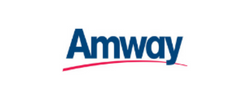
Headquarters |
Ada, Michigan
Founded |
1959
Product Category |
Health and wellness
Hero Product |
Nutrilite (accounts for more than half of global sales)
Founders |
Richard DeVos and Jay Van Andel
Current Leadership |
CEO Milind Pant
Hit Billion-Dollar Status |
1980
Privately held
International Markets |
More than 100 countries and territories worldwide
COMMONALITIES:
- Identifies as Customer Centric
- In-house Research and Development
- In-house Manufacturing: Combination
- ESG Initiatives
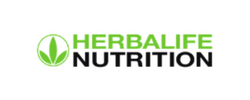
Headquarters |
Los Angeles, California
Founded |
1980
Product Category |
Weight management, sports nutrition, health and wellness
Hero Product |
#1 brand meal replacement and protein supplements in world
Founder |
Mark Hughes
Current Leadership |
Chairman and CEO John Agwunobi
Hit Billion-Dollar Status |
2001
Public (HLF: NYSE)
International Markets |
95
COMMONALITIES:
- Utilizes segmentation: In nearly all key markets
- Identifies as Customer Centric
- In-house Research and Development: Combination
- In-house Manufacturing: 65% of product
- Utilizes Regional Distribution Centers
- ESG Initiatives
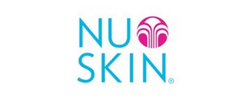
Headquarters |
Provo, Utah
Founded |
1984
Product Category |
Beauty and wellness
Hero Product |
60/40 split in favor of personal care products
Founders |
Blake Roney, Sandie Tillotson, Steve Lund
Current Leadership |
President and CEO Ryan Napierski
Hit Billion-Dollar Status |
Fiscal year 2004
Public (NUS: NYSE)
International Markets |
approximately 50
COMMONALITIES:
- Utilizes segmentation: Outside Mainland China
- Identifies as Customer Centric
- In-house Research and Development
- In-house Manufacturing: In Mainland China; Trusted third-parties elsewhere
- In-house IT: Combination
- Utilizes Regional Distribution Centers
- ESG Initiatives
- Transparent Communications Priority
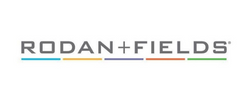
Headquarters |
San Francisco, California
Founded |
2002 (retail), 2008 (direct selling)
Product Category |
Skin care
Hero Product |
Rodan + Fields Core Regimens
Founders |
Dr. Katie Rodan and Dr. Kathy Fields
Current Leadership |
CEO and President Dimitri Haloulos
Hit Billion-Dollar Status |
2016
Privately held
International Markets |
4
COMMONALITIES:
- Identifies as Customer Centric
- In-house Research and Development
- In-house IT: Combination
- ESG Initiatives
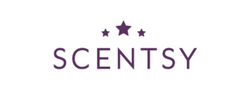
Headquarters |
Meridian, Idaho
Founded |
2004
Product Category |
Home durable and consumable within home fragrance space
Hero Product |
Scentsy Warmers and Fragranced Wax
Founders |
Heidi and Orville Thompson
Current Leadership |
Dan Orchard, President and Interim CEO
Hit Billion-Dollar Status |
Fiscal year 2021
Privately Held
International Markets |
5
COMMONALITIES:
- Utilizes segmentation: To provide crystal clear value proposition for target audience
- Identifies as Customer Centric
- In-house Research and Development: In-house works in tandem with outside partners
- In-house Manufacturing: For fragrance; not for hard goods.
- Utilizes Regional Distribution Centers
- In-house IT
- ESG Initiatives
- Transparent Communications Priority
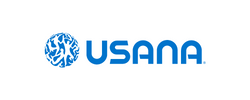
Headquarters |
Salt Lake City, Utah
Founded |
1992
Product Category |
Nutritional supplements, skin care, lifestyle, weight management
Hero Product | USANA CellSentials
Founder |
Dr. Myron Wentz
Current Leadership |
CEO and Chairman Kevin Guest
Hit Billion-Dollar Status |
Fiscal year 2016
Public (USNA: NYSE)
International Markets |
24
COMMONALITIES:
- Utilizes segmentation
- Identifies as Customer Centric
- In-house Research and Development
- In-house Manufacturing: 65% of product
- Utilizes Regional Distribution Centers
- In-house IT
- ESG Initiatives: Employee and associate/customer
- Transparent Communications Priority
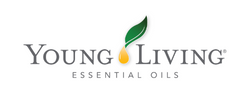
Headquarters |
Lehi, Utah
Founded |
1994
Product Category |
Essential oils and essential oil-infused products
Hero Product |
Ningxia, Thieves, Lavender
Founder |
D. Gary Young
Current Leadership |
Mary Young
Hit Billion-Dollar Status |
2015
Privately Held
International Markets |
Service and ship globally with markets in North and South America, Europe, Asia and Africa
COMMONALITIES:
- Identifies as Customer Centric
- In-house Research and Development
- In-house Manufacturing
- ESG Initiatives
From the March 2022 issue of Direct Selling News magazine.


